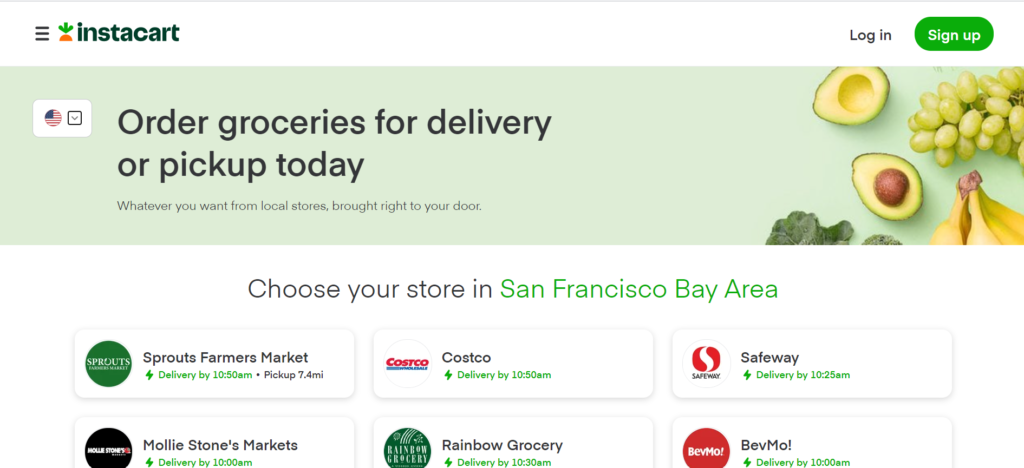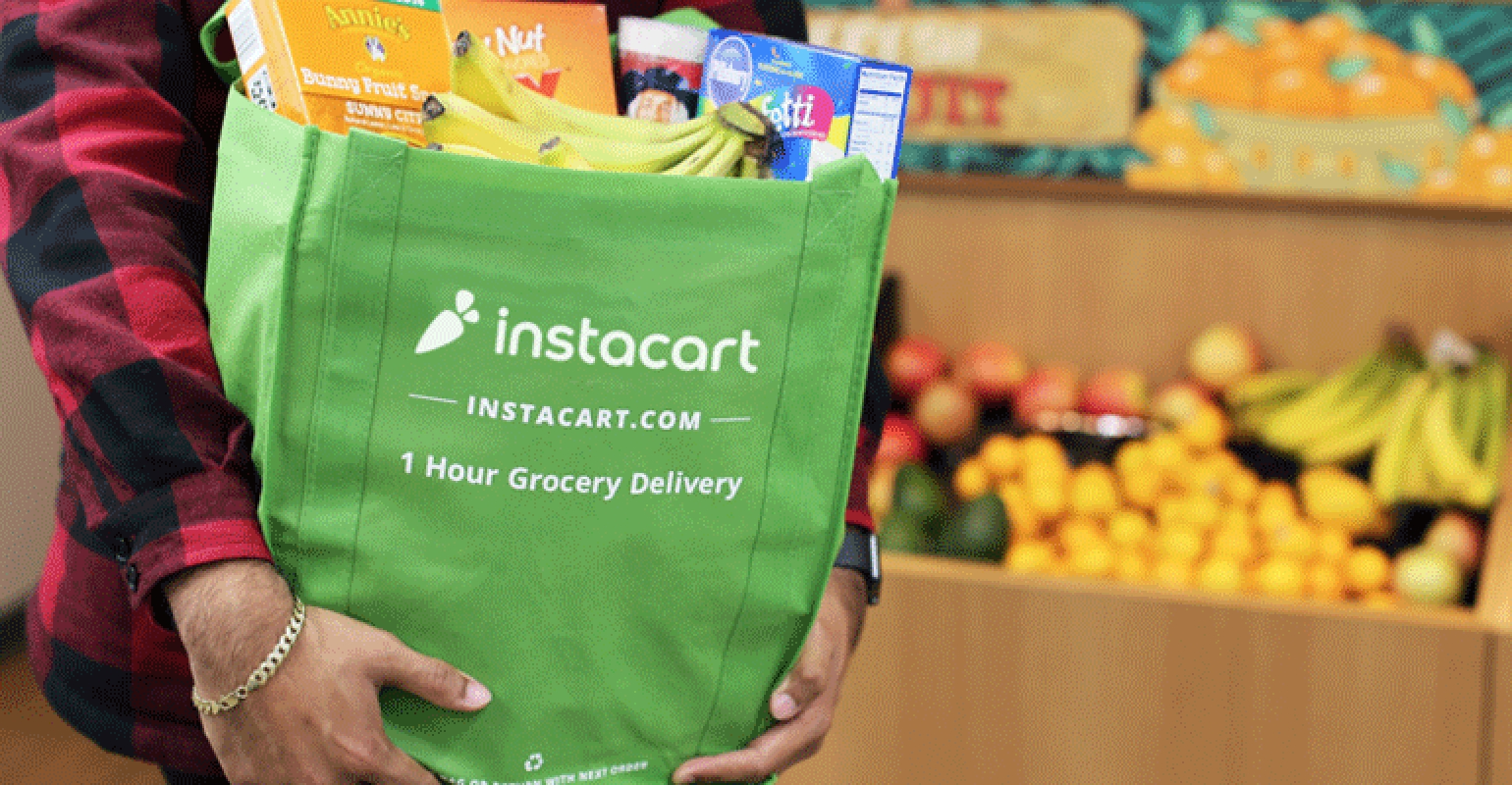About Instacart
Instacart is a platform for online grocery pickup and delivery. Apoorva Mehta founded the company in 2012. Today, the company distributes groceries in over 5,500 communities in the United States and Canada. Instacart has expanded steadily over the previous decade. The brand, however, gained worldwide recognition during the COVID-19 pandemic. In the first quarter of 2020, Instacart exceeded its annual revenue target. It has made its CEO one of the world’s youngest billionaires.
The business model of Instacart is straightforward. Assume you want to purchase something from a certain retailer. You submit your order using the app, a personal shopper is assigned to you, purchases for you, and then delivers everything to your door – all without you ever having to leave the house. Isn’t it cool?

History of Instacart / Success Story of Instcart
Apoorva Mehta, a former Amazon employee, and his friends Max Mullen and Brandon Leonardo created Instacart in 2012. Prior to Instacart, Apoorva Mehta attempted and failed to create 20 other startups. These businesses comprised specialised social networks and games, but none were successful.
So he was taking a big risk with this one. Mehta developed the concept for this online grocery delivery network and pitched it to Y Combinator, where he collected enough cash to establish it. Mehta created the original version of the app and was also the platform’s first customer.
In 2015, Instacart launched in San Francisco with around 200 people, including personal shoppers who may work full-time or part-time.
Instacart’s purpose was for customers to spend less time shopping for food and more time cooking and enjoying it with their family. As a result, unlike most other online grocery services, Instacart concentrated on delivering its customers’ food within a few of hours – a game changer for the young startup.
Business Model
Instacart’s business model is based on collaborating with grocery retailers and connecting their personal shoppers with their consumers.
The app functions similarly to any other regular retail app in that you may add products to your cart and then check them out. Customers may also pay using the app, which eliminates the need for them to interact with their personal shoppers.
In terms of competitiveness, Instacart competed directly with services such as Amazon, Google Shopping Express, UberEats, and Postmates. In comparison to all of these, Instacart compensated its customers more, with wages ranging from $10 to $17 per hour plus tips.
How does Instacart Make Money?
The site generates money by charging a delivery fee of $5.99 for orders above $35 and $7.99 for goods under $35.
Users may also sign up for Instacart Express, a premium service that costs $99 per year and includes free delivery on all purchases above $35.
Funding & Investors
The company is currently valued at over $39 billion, making it one of the most successful internet platforms in the United States.
Instacart received millions of dollars in a new investment round in 2020. Instacart just secured $265 million in funding from a group of venture companies in order to reach its $39 billion value.
The company is also branching out into advertising. The platform provides advertisers with important and unique detailed shopping data, such as how much someone spends on groceries and what items they purchase. Instacart’s objective is to earn $1 billion in ad sales by 2022, up from $300 million last year.
To accomplish this aim, they’ve engaged top industry talent, including ex-Facebook executive Carolyn Everson, as their new president, to kickstart this digital revolution while also expanding the diversity of female executives.
Growth & Revenue
Instacart’s revenue gradually increased, rising from $525 million in 2018 to $735 million in 2019. However, after 2020 arrived and the pandemic shut down the whole world, Instacart saw unprecedented growth.
Instacart is expected to reach $1.5 billion in revenue in 2020, with $35 billion in sales. At the same time, the company’s personal shoppers increased. Because, when individuals began to lose their jobs, they saw Instacart as both a terrific career prospect and a quick method to make money.
Only in the first half of 2020, the app attracted roughly 300,000 new shoppers, and this figure is projected to rise in the future months. When the COVID struck, the platform was apparently rebounding from a $300 million loss in 2019, and the firm turned a profit of $10 million for the first time in April.
During the pandamic, Instacart’s overall market share climbed from 8.9 percent to about 17.2 percent in the beginning of June 2020, which appeared an impossible achievement for a startup as small as Instacart before the outbreak.
By October, Instacart had surpassed Walmart and Amazon to become the third most popular online grocery retailer in the United States. Currently, the firm has over 500 retail partners, including 7-Eleven and Sephora, and it distributes from about 8000 shop locations across the United States and Canada. Not bad for a platform that only launched a year ago, right?
Also Read: Zepto – Success Story, Business Model, Revenue, Growth & Funding
Competitors
Shipt is the primary competitor. Based in Birmingham, Alabama, they have a sizable company and an app similar to Instacart, with contractors doing the shopping and delivery for consumers.
Postmates is another rival, but not directly. They mostly deliver meals, but they have a partnership with Walgreens, so many orders are placed for groceries. Customers may potentially purchase from any place a Visa card is accepted, even grocery shops like Publix in the southeast, because they offer payment cards to their drivers.
Future of Instacart
In the future, Instacart will have to concentrate on maintaining its customer base even when the lockdowns are lifted. With 89 percent of users considering Instacart to be a vital service and 86 percent planning to continue using it in the future, Instacart has the ability to grow in the next years.
However, the company must ensure that they remain committed to its basic values—quick delivery and excellent customer service. Given that the startup is about to go public, the future of Instacart is bright.
Instacart is now one of the most fascinating digital platforms to watch. During the pandemic, the company had a significant increase in growth, which must now be sustained.
Is Instacart the retail future? Is the platform changing the way people shop? And how will it continue to roil the eCommerce industry? Only time will tell how Instacart will continue to disrupt the retail sector and how this billion-dollar firm will expand.
To read more content like this, subscribe to our newsletter
Go to the full page to view and submit the form.

